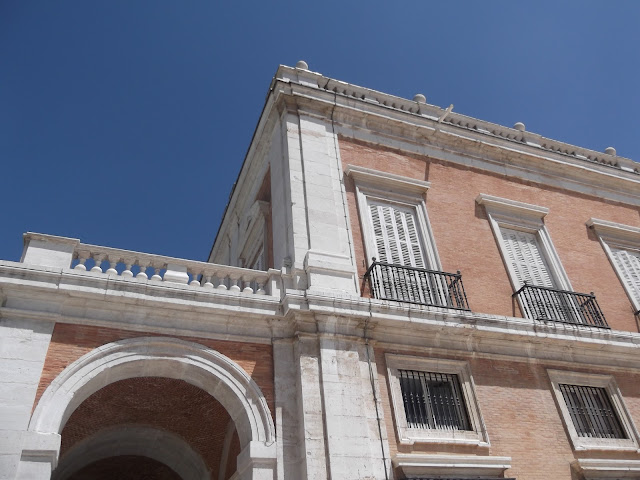Cuando el Emperador Carlos V empezó a interesarse por desarrollar Aranjuez como una villa regia con amplio coto de caza se aposentó, como en 1501 había hecho Felipe el Hermoso, en el viejo palacio de los maestres de Santiago.
Fue erigido por orden de Felipe II de España, quien le encomendó el proyecto al arquitecto Juan Bautista de Toledo, que murió durante su construcción, por lo que su discípulo Juan de Herrera fue el encargado de rematar la obra. Durante todo el siglo XVII se paró la obra, hasta que en tiempos de Fernando VI se acomete una importante ampliación, que continuará Carlos III dotándolo de unas alas que encierran el patio de armas, tal y como se puede contemplar hoy en día. Un palacio menor, la llamada Casa del Labrador, se sitúa fuera del recinto, formando parte del Jardín del Príncipe.
Los inmensos jardines, construidos para ensalzar la residencia real de la árida y seca meseta del centro de España, y regados con las aguas de los ríos Tajo y Jarama, son los más importantes del periodo de los Habsburgo en España. Alcanzaron singular renombre gracias al Concierto de Aranjuez, de Joaquín Rodrigo, considerada la composición musical española más escuchada en el mundo.
When the Emperor Carlos V began being interested for developing Aranjuez as a royal town with wide fighter preserve aposentó, as in 1501 Felipe Beautiful had done, in the old palace of the masters of Santiago.
It was erected by order of Felipe II of Spain, who entrusted the project to the architect Juan Bautista of Toledo, who died during its construction, therefore its disciple Juan de Herrera was the manager of finishing off the work. During the whole XVIIth century the work stopped, until in times of Fernando VI there is attacked an important enlargement, which Carlos III will continue providing it with a few wings that shut the weapon courtyard up, as it is possible to meditate nowadays. A less palace, the called House of the Labrador, is located out of the enclosure, being part of the Garden of the Prince.
The immense gardens, constructed to extoll the real residence of the arid and dry plateau of the center of Spain, and watered with the waters of the rivers Tagus and Jarama, are the most important of the period of Hapsburg in Spain. They reached singular fame thanks to the Concert of Aranjuez, of Joaquín Rodrigo, considered the Spanish musical composition most listened in the world.






















No comments:
Post a Comment